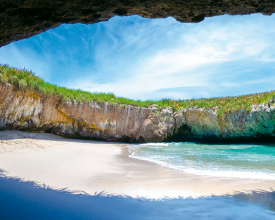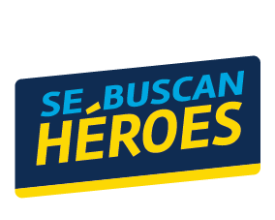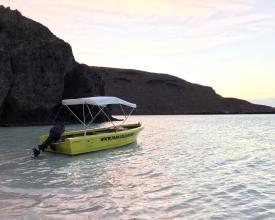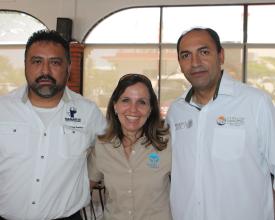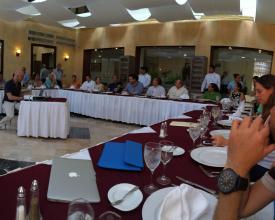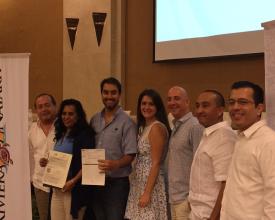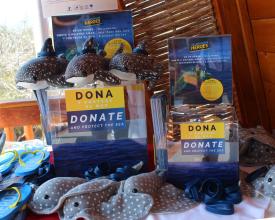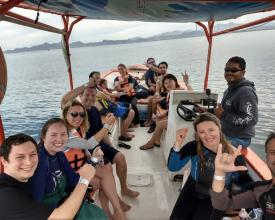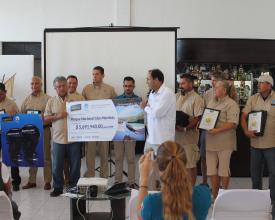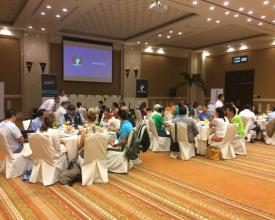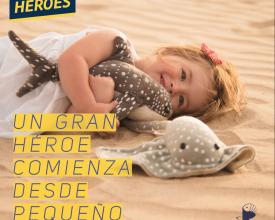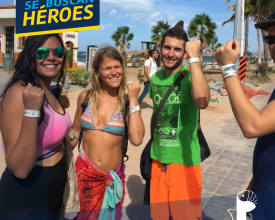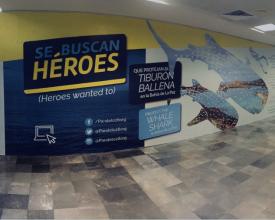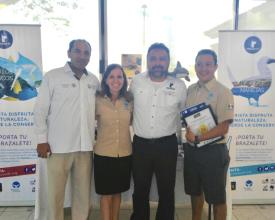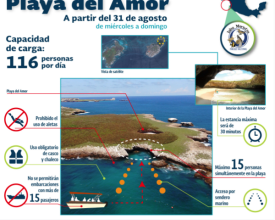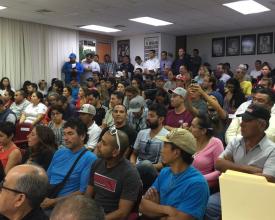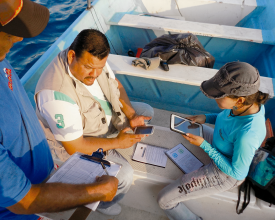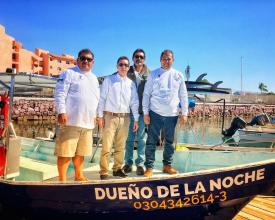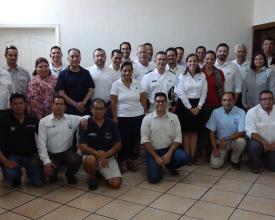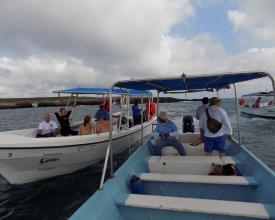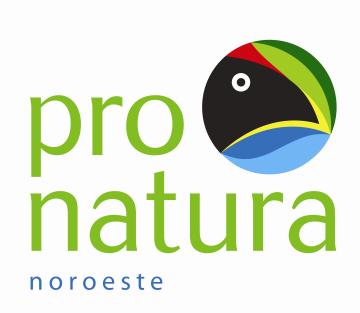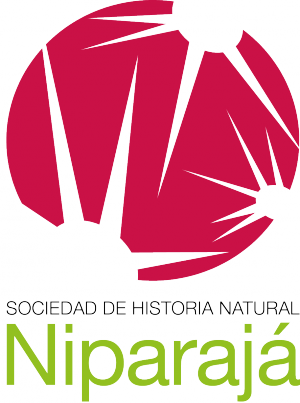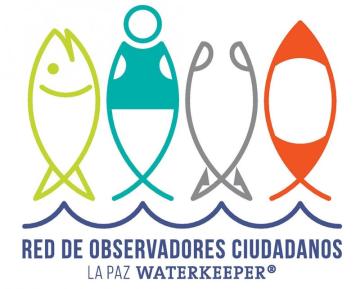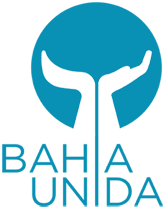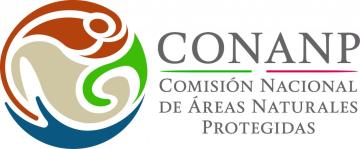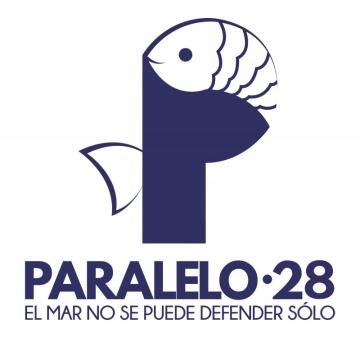
Heroes Wanted: tourism, partnerships and communication for funding in marine protected areas
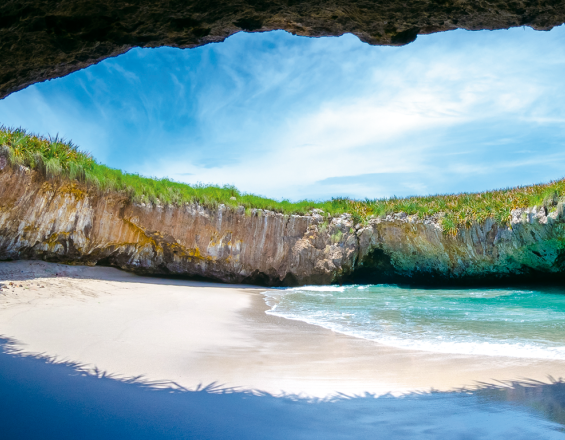
Four civil society organizations (CSOs) make up Paralelo 28 with the aim of raising resources to contribute to the management and monitoring of the natural protected areas (NPAs) of the Gulf of California. In 2016 they launch the Se Buscan Héroes en el Parque Nacional Islas Marietas campaign, in collaboration with the Comisión Nacional de Áreas Naturales Protegidas (CONANP) and the Riviera Nayarit Visitors and Convention Bureau.
Agreements are established between Tourism Service Providers (TSPs), CSOs and the government to install a financing mechanism that contributes to the good management of the ANP. TSPs form the Bahía Unida association and contribute $40 pesos per tourist to the Marietas Fund. Paralelo 28 executes the communication campaign recognizing the participating companies (+95%). CSOs and the government execute management actions with the funds generated, offering transparency and clarity in financial management and initiate replications in other PNAs. Annual budget increased by 5,500%.
Context
Challenges addressed
Mexico's NPAs lack sufficient resources and the trend is discouraging. This is reflected in the loss of environmental attributes and tourist attractiveness, threatening economic activities and biodiversity in the medium term.
In 2015, visits to Islas Marietas NP increased more than 30%, as a result of a campaign promoting "La Playa del Amor" as one of the best in the world. At 40 meters long, it received up to 3,000 tourists per day in high season, affecting the quality of visitation, generating a high risk of accidents and deteriorating the island's reefs. This resulted in the temporary closure of beach visitation.
The great challenge was to manage and monitor tourism activity, with minimal funding, to reestablish economic activity, restore the affected corals, reduce future impacts and maintain the quality of the tourist experience.
Location
Process
Summary of the process
The building blocks interact in multiple stages of the project; however, a large part of the success lies in the construction of solid intersectoral alliances, with clear roles and responsibilities, aimed at biodiversity conservation and tourism attraction.
Social marketing is designed as an incentive to promote partnerships, and is implemented throughout the project to recognize the partners that participate in the fundraising mechanisms (companies and individuals).
Tourism management is the basis for improving the quality of visitation, is designed within the framework of the alliances and benefits from inspection and surveillance (I&V) to ensure compliance. The I&V in turn is financed by the collection mechanism and enforces the alliance agreements.
Building Blocks
Multi-sectoral partnerships, coordination and accountability mechanisms
Agreements are established between the tourism sector (service providers, hotels, sectoral groups, tourism promotion offices, etc.), civil society organizations (CSOs) and government to design and implement a collection mechanism.
Agreements are established indicating the collection and accountability mechanisms, as well as the roles of the partners.
Each year an annual operating program (POA) is developed with its corresponding budget, which specifies the items and amounts to which the investment will be allocated. The AOP is developed by the National Commission of Natural Protected Areas (CONANP) and Pronatura Noroeste (the local CSO), and presented to the board of Bahía Unida (the TSP association) for approval.
Technical and financial reports are presented every two months to the Bahía Unida board.
This building block is led by CONANP and the local CSO.
Enabling factors
- Government leadership to: a) stop unsustainable tourism activities, b) promote alliances and mechanisms, and c) organize tourism activities.
- Integration of PST into a civil association.
- Existence of a credible third party implementer to manage and provide technical support.
- Constant communication and growing trust between individuals and later between institutions.
- Equity in contributions (proportional to the number of tourists).
- Transparency in the use of resources and accountability in the field and through high quality reports.
Lesson learned
- It is necessary that there is a need for organization and action in the sector (e.g. closure of Playa del Amor). The leadership of the authority can be decisive to generate/motivate it.
- It is important to generate a quick and visible impact for all contributors as this generates trust and credibility (e.g. presence of vigilantes).
- The definition of the main purposes of the fund is fundamental. It is possible to expand them, in agreement with the contributors, if there are surpluses.
- Experts should design the operational programs (government + CSOs); however, contributors should have a say in their use.
- It is desirable to have incentives related to the needs of the contributors (e.g. marketing, preference in access to permits, etc.).
- Replication is possible, inside or outside natural protected areas, as long as there is a common object of interest (e.g., visiting the same site or harvesting the same species, etc.).
Resources
Collection mechanisms
The initiative has explored multiple fundraising strategies and mechanisms such as wristbands, souvenir sales, donations on the website, placement of ballot boxes in hotels, etc. To date, the tourist wristband has been the most successful.
The bracelet
In Islas Marietas a donation of $40 per tourist was agreed upon. Tourist service providers (TSPs) make a donation proportional to the number of tourists projected and in return get the corresponding bracelets and donation receipt. Tourists receive their bracelet when they sign up for the tour.
In sites such as Cabo Pulmo and Loreto this mechanism did not seem adequate and we are testing other options.
Other mechanisms
- Limited edition sharks, manta rays and stuffed booby birds for sale online and at events. In some cases PSTs buy them in volume.
- Module on the Paralelo 28 website for online donations.
- Installation of urns in hotels to facilitate donations from tourists. In one of the cases it is accompanied by a communication campaign of the hotel.
- In Cabo Pulmo, some PSTs and stores agreed to make monthly donations of between 1,000 and 2,000 pesos.
This building block is led by the PSTs, the local organization and Paralelo 28.
Enabling factors
- The commitment of more than 95% of the TSPs to support through a fair and equitable mechanism.
- The custom in the use of the bracelet by the SWPs in Marietas favored a quick and generalized adoption.
- A good communication campaign, explaining the meaning of the double bracelet and the importance of TSP contributions, helped to motivate support.
*Access to natural protected areas in Mexico requires a fee to be paid. In exchange for this payment a bracelet is given.
Lesson learned
- The bracelet is a very good mechanism to keep track of donations, to ensure that they are equitable and proportional to the volume of tourists that each company carries.
- Selling souvenirs online requires a significant infrastructure and operational capacity, superior to that of the Paralleo 28 team (we suspended). Advance and volume sales have proven to be a good option in some cases, however, it is not very well accepted by the final sellers.
- Ballot boxes are a fairly cost-effective mechanism for small campaign support expenditures.
- In Mexico, online donations are rare. It is necessary to have the option, however, fundraising projections should be conservative.
- Donation agreements for fixed monthly amounts are not recommended because it puts contributors in difficulties during low seasonal flow, besides the donation is not associated to the income generating capacity of the PST house.
- Recognition of companies can be very important in cases where the proportion of participants is low.
Resources
Marketing for social change
The Se buscan Héroes campaign is designed to promote and recognize the contributions of individuals and companies to the financing of natural protected areas.
Its web page describes its partners, the sites where it works, the risks and threats it addresses, its work logic and what is done with the donations. It also thanks all the companies that contribute to the cause and has a module to receive donations.
On Facebook, it maintains a fresh, fluid and very graphic communication with its more than 19,500 followers to position the brand and recognize the partner companies.
Uses various public spaces to make brand presence and promote donations, including the installation of donation boxes in hotels and billboards in public places.
Organizes events to launch the campaign and recognize contributors.
This building block is led by Paralelo 28.
Enabling factors
- Initial design of the campaign was done by an important international marketing company, who donated part of the costs.
- The partners of the Paralelo 28 initiative are recognized as serious and professional organizations, with extensive experience in conservation in the region.
- We have two years of funding for the implementation of the campaign.
- The heads of the Ministry of the Environment and CONANP support the campaign and convey to their teams the importance of replicating it in other PNAs.
Lesson learned
It is easy to disperse the efforts of communication campaigns. At Paralelo 28 it has been key to clearly define the objective of the campaign from the beginning, allowing members, partners and funders to have clarity on the actions to be taken and the metrics to be evaluated. The objective is to raise funds for NPA management and monitoring.
Having a coordinator for the initiative has made it possible to adequately manage the participation of the four partner organizations and always look out for common interests.
Generating designs that are easily adaptable to other PNAs significantly reduces campaign costs.
Having well-defined roles and leadership for each partner at each site allows for effective coordination.
Tourism management
In May 2016, the National Commission of Natural Protected Areas (CONANP) decided to temporarily suspend visits to Playa del Amor due to the impact of unregulated tourism activity in the national park. This decision forces stakeholders to redefine the way tourism will be done in the protected natural area.
Multiple meetings were held with all tourism service providers, authorities, and academics to define new rules, agree on rights to use the beach, and commit to co-investment.
The main rules that were established were the carrying capacity (116 people per day), the number of people on the beach at the same time (15), the maximum stay (30 min), the prohibition of the use of fins and the obligation to wear a helmet and vest to access the beach, and the exclusive use of the beach for tourist service providers (TSPs) with boats with a maximum of 15 passengers.
On the other hand, during the closure of the tourist activity, coral restoration activities are carried out, cleaning the seabed and monitoring the composition and structure of the reef communities.
This building block is led by the authority, in this case CONANP.
Enabling factors
CONANP's firm decision to close the park forced everyone to sit down at the table to negotiate and reach agreements quickly in order to reopen the ANP.
The leadership, credibility, and trust that the Director of the protected natural area (ANP) generated among the various stakeholders.
The previous professional work of the ANP's management in the Marietas Islands.
The participation of PST and all the government agencies involved.
Lesson learned
The Mexican government, through CONANP, should regulate tourism activity in NPAs to ensure the sustainability of the activity; however, it should not subsidize management actions to maintain the activity. It is the TSPs who can and should cover the costs associated with the management of their activity. Islas Marietas and its TSPs become a national pioneer in achieving this through its collection mechanism.
Management decisions, such as beach closure, should be made based on scientific information relevant to the problem and with ample communication with stakeholders.
Resources
Effective inspection and surveillance
This building block is described in detail in the solution"A holistic strategy for Protected Area management", building blocks 1, 2, 3 and 5. The other four building blocks described in this solution are part of building block 4(Long-term financing for MPA management) of the holistic solution.
The first step is to have a diagnosis of inspection and surveillance in the protected area through interviews with experts and field visits.
The second is to promote inter-institutional coordination so that the responsible and empowered authorities are on the water.
The third step is to have the necessary resources, equipment, technology, and capacities to be present.
The fourth and critical step is the joint operation at sea, to ensure compliance with regulations. This is done by the National Commission of Natural Protected Areas (CONANP) alone (Marietas) or with the support of other authorities (Cabo Pulmo and Loreto) and local organizations (Espiritu Santo). The information from each tour is systematized in a mobile application and reports are generated to make operational decisions and verify the proper use of resources.
The leadership of this building block is implemented by authorities and/or the local organization.
Enabling factors
Collaboration agreements between organizations and government.
Working within a protected area allows the responsible authority to be identified.
Pronatura Noroeste and the Citizen Observers Network have been working for more than seven years to strengthen inspection and surveillance in some of these sites.
Alliance with partners who are experts in geographic information systems and mobile applications to design the online logbook.
Private funding of organizations that enable their continued participation.
Lesson learned
Organized civil society has multiple roles in strengthening the inspection and surveillance of natural protected areas.
Alternative financing mechanisms allow for significant progress in this building block.
Technology can play a very important role in reducing operational costs and increasing the effectiveness of actions. It is important to acquire appropriate technology for the sites that is easy to use and repair.
Involving communities in marine surveillance can be successful when there are exclusive rights to use the resources and there is rule of law, otherwise it results in frustration for the users.
Impacts
On-site:
Revenue of $550,000 dollars in 18 months equivalent to an annual increase of 5780% with respect to the fiscal 2018 budget.
Investment of $450,000 in the ANP to: a) increase the presence of guards (personnel, equipment and supplies); b) increase environmental awareness (environmental educators); c) strengthen monitoring and restoration of the reef; d) train TSPs in best practices, and e) strengthen CONANP's management capacity.
More than 800 tours and 25,000 vessels verified and an increase from 88% to 99% in compliance with regulations by TSPs.
Ordering of tourist activity (installation of mooring buoys, established carrying capacity, rules to avoid impact to corals), reef recovery and increase in the quality of visitation.
At the regional level:
Positioning of a solid and successful communication campaign, with replicable products for multiple scenarios.
Working model for other marine and terrestrial areas, with a successful replication case (whale shark sighting in the Bay of La Paz, Baja California Sur) and others in progress (Espiritu Santo NP, Cabo Pulmo and Loreto Bay).
Beneficiaries
The tourism sector in general and the 175 tourism service companies that maintain their activity.
CONANP with an operating budget.
The CSOs that test and replicate innovative approaches.
The 300,000 tourists that visit the ANP.
Sustainable Development Goals
Story
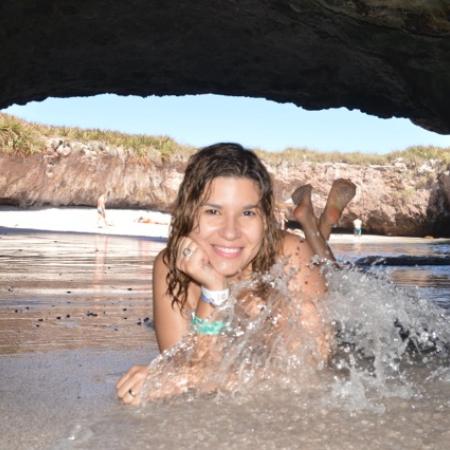
A beautiful photograph of La Playa del Amor in Islas Marietas National Park, captured by Argentine photographer Nicolás Melani, went viral on social media. Soon, the photograph would illustrate one of the "must-see" places in this life, and the destination would receive a promotion and demand for which I was not prepared.
It was this image that took me to the Marietas Islands for the first time. I bought a ticket to Puerto Vallarta, Jalisco, packed my suitcase, grabbed my selfie stick and headed for the bus terminal. Once I was staying there, I met a group with the same objective. Together we headed for the marina and set sail on a catamaran with 250 other people in search of the selfie.
As we approached the island we saw over 50 boats and a world of people swimming to get to the beach. Our guide jumped into the water, we followed him. Next to me, there was a lady who did not know how to swim, she was so excited that she jumped into the water and tried unsuccessfully to reach the "access". With help, she sadly returned to the boat. Finally, among a sea of people I managed to reach the Playa del Amor, I took the "selfie", with 40 other tourists in the background, and I left disappointed of the adventure.
Two years later I found in the social networks of Paralelo 28 that in Islas Marietas they had found a group of heroes who were changing tourism on the island. The government had decided to close and tidy up the beach, and with the support of tourists, researchers and civil society organizations, they tidied up and reopened it.
I decided to give my selfie another chance. This time I did not go by catamaran, as only 15-person boats had access to the beach. We boarded and were given two bracelets (one from CONANP and one from Se Buscan Héroes). Upon arrival, a park ranger registered us on his tablet, handed us helmets and told us that our turn would be in 40 minutes. We swam to the beach without fins and had 20 minutes ALONE to enjoy the best beach in the world. On the way out we saw another park ranger guarding the northern part of the island.
On the way back we were told that $40 pesos from my payment, and from all the tourists, goes to a fund to ensure the good management of the protected natural area. Without a doubt, in Islas Marietas we are all HEROES. I also found out that other areas are doing the same. Next destination... Cabo Pulmo, Loreto, Espiritu Santo...

